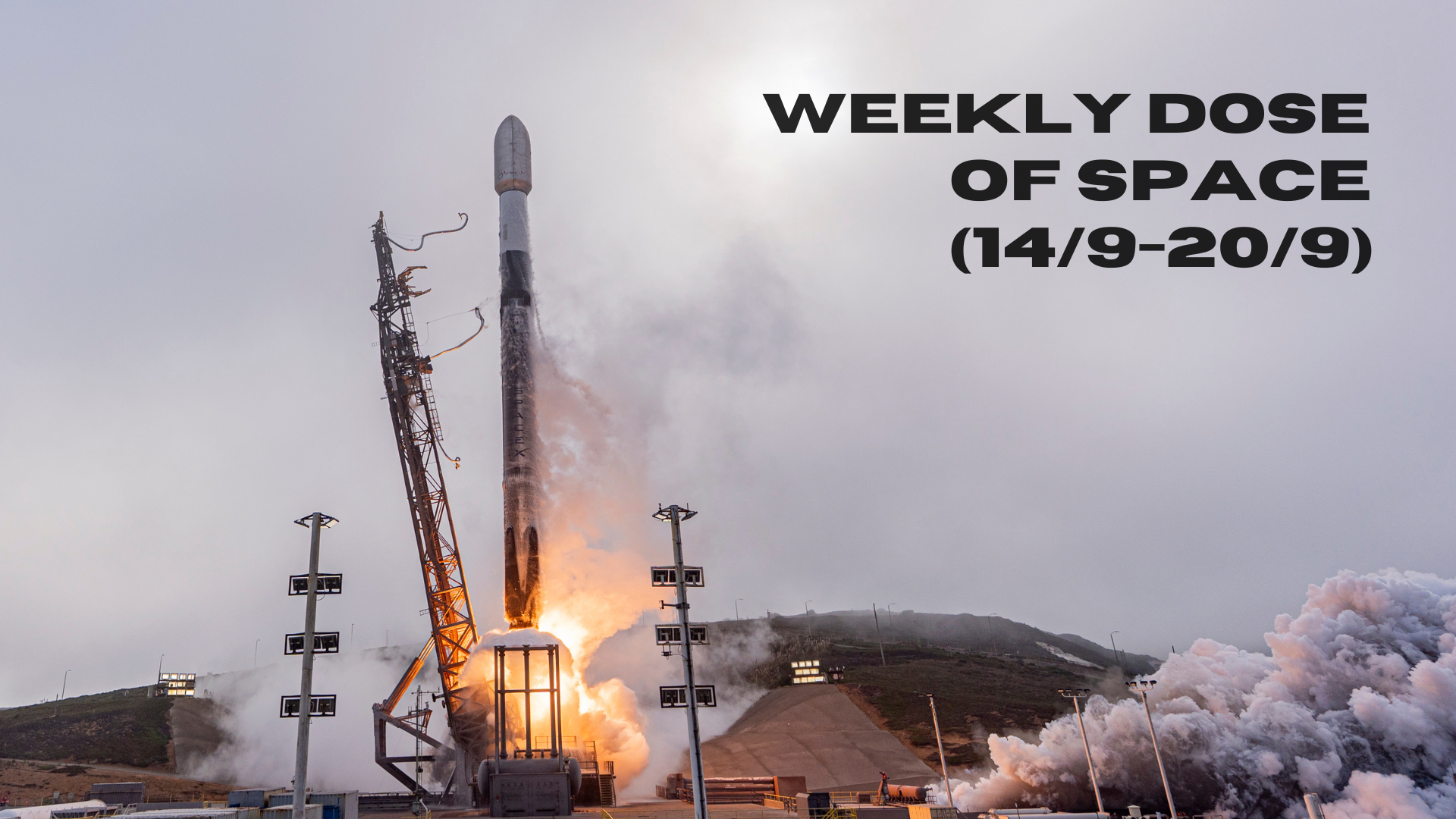Table of Contents
Welcome back to Weekly Dose of Space! This week had five launches heading above the Kármán line, with most for internet satellites. News during the week had a space station resupply arrive a day late, while the VIPER rover is heading to the Moon again. As always, we'll also look ahead to what the worldwide launch schedule might look like next week.
Launches This Week
September 14th - Falcon 9 with NG-23
Northrop Grumman's twenty-third Cygnus resupply mission was launched atop of a Falcon 9, flying out of Space Launch Complex 40 in Florida, to head to the International Space Station. Supporting this launch was booster B1094 for its fourth flight, landing at Landing Zone 2 back in Cape Canaveral.
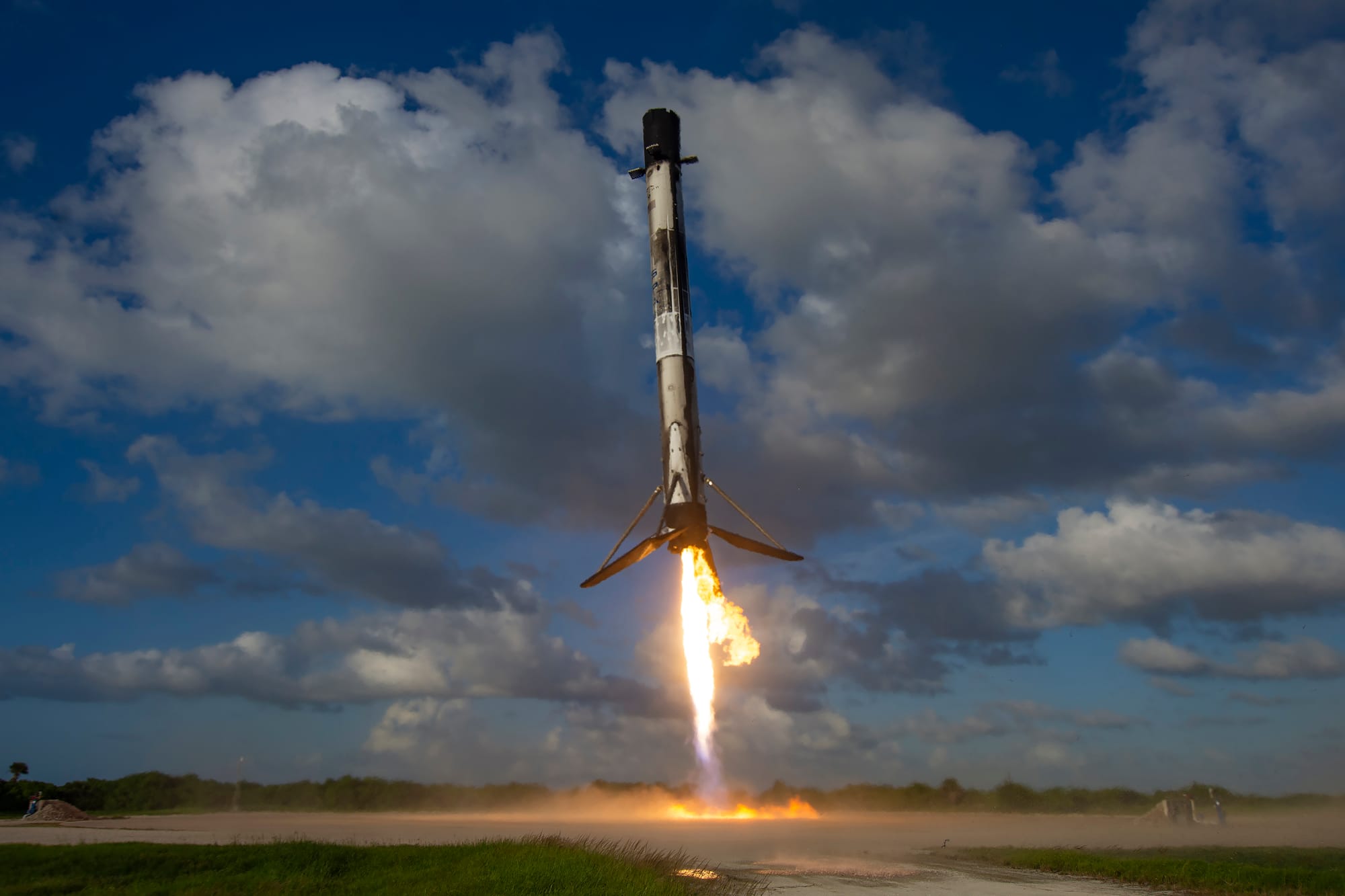
September 16th - Long March 2C with four internet test satellites
A Long March 2C, with a Yuanzheng-1S upper-stage, flying from the Jiuquan Satellite Launch Center sent four satellites for internet technology testing into low Earth orbit. Three spacecraft manufacturers contributed the satellites onboard, two commercial ventures and one state-owned enterprise, which may improve the GuoWang and Qianfan constellations.
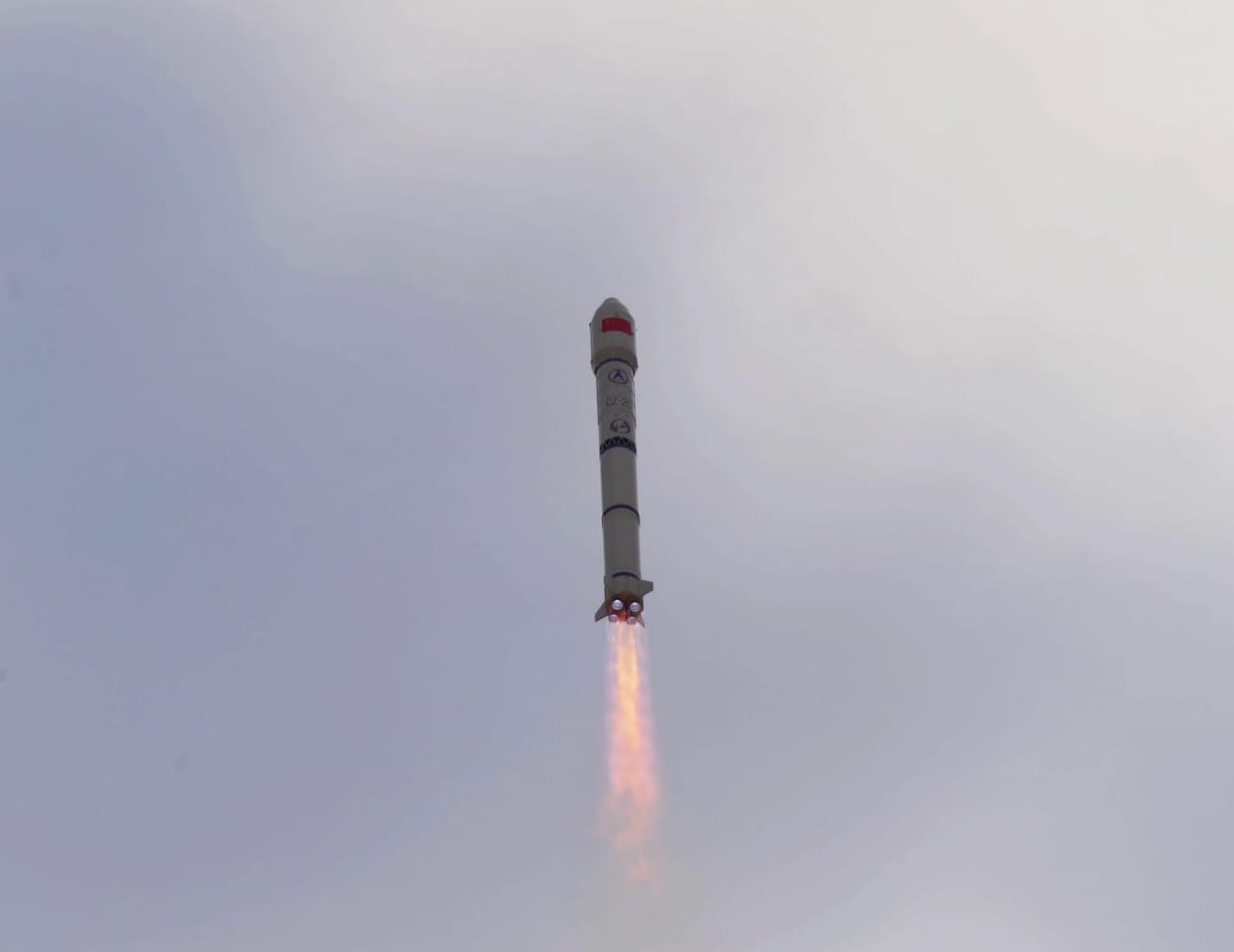
September 18th - Falcon 9 with Starlink Group 10-61
Twenty-eight Starlink satellites were sent to low Earth orbit atop of a Falcon 9 from Space Launch Complex 40. Booster B1092 supported this mission for its seventh flight, landing downrange on the drone ship 'Just Read The Instructions'.
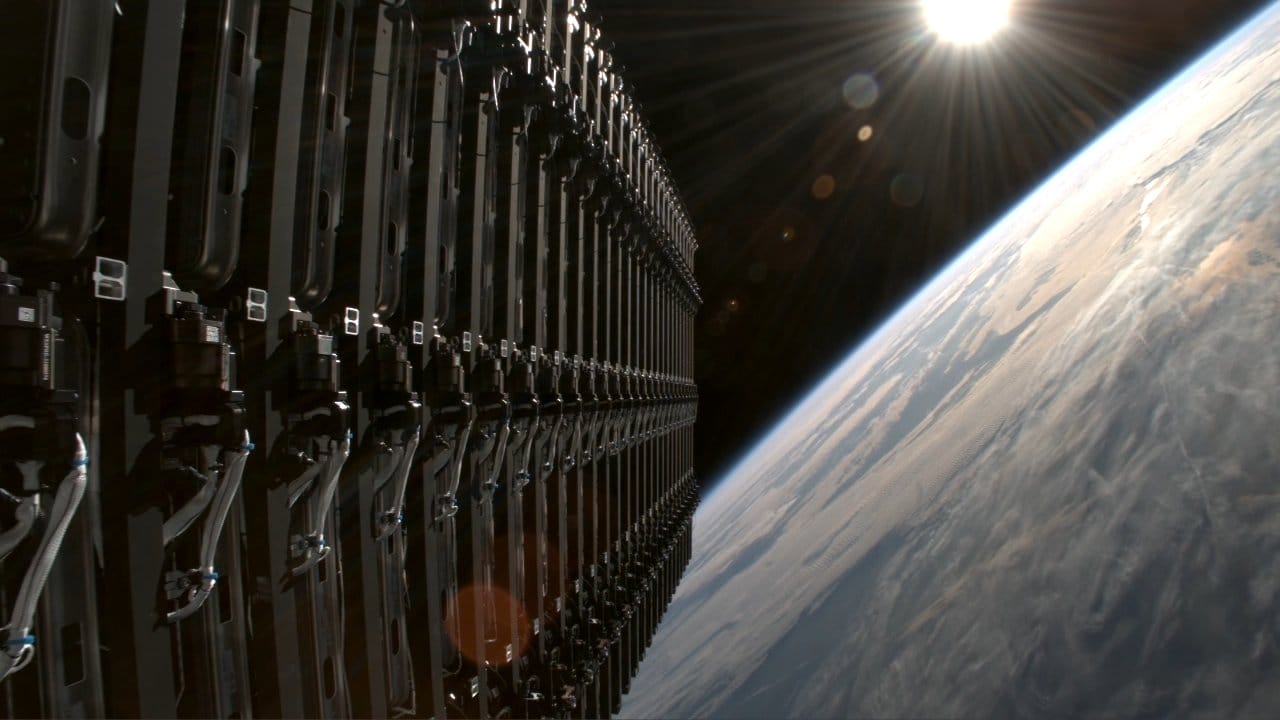
September 18th - New Shepard for NS-35
Blue Origin launched its New Shepard rocket on a suborbital flight from its West Texas site for a research and commercial payload-carrying mission. Capsule RSS H.G. Wells flew for the twelfth time on this mission while booster NS-5 flew for the fifth time.
What a view. From our new free flying camera — deployed on yesterday’s New Shepard mission. (The “bubble” is the seam between two 180 degree lenses.) pic.twitter.com/X6nX5vz2YT
— Jeff Bezos (@JeffBezos) September 20, 2025
New Shepard's booster and capsule seen during the NS-35 mission by an ejected camera, via Jeff Bezos on Twitter.
September 19th - Falcon 9 with Starlink Group 17-12
Another Falcon 9 sent twenty-four Starlink satellites into low Earth orbit from Space Launch Complex 4E, in California. Supporting this mission was B1088, flying for the tenth time and landing on the drone ship 'Of Course I Still Love You' downrange.
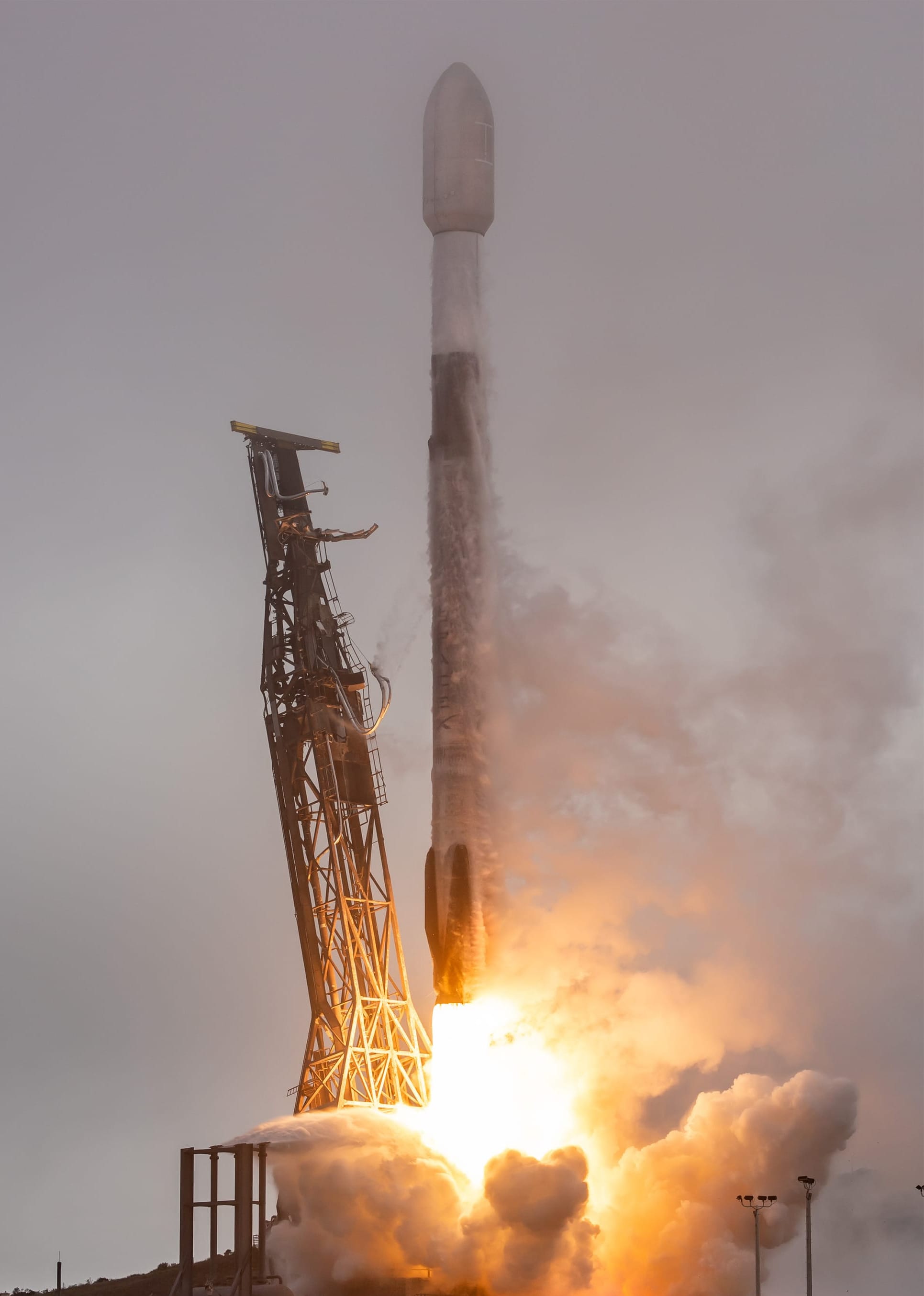
In Other Space News
Cygnus XL arrives at International Space Station
At 7:24am ET (1124 UTC), the crew aboard the space station successfully captured Northrop Grumman’s CRS-23 spacecraft. Next, the Cygnus spacecraft will be installed to a port on the station—coverage begins at 9am ET (1300 UTC). pic.twitter.com/23Fsy1cLSj
— NASA (@NASA) September 18, 2025
Northrop Grumman's Cygnus spacecraft being captured on September 18th, via NASA on Twitter.
Northrop Grumman's first Cygnus XL spacecraft, for its twenty-third International Space Station resupply mission, arrived at the International Space Station on September 18th. The spacecraft was captured by the Canadarm2 robotic arm and berthed to the station by NASA astronauts Jonny Kim and Zena Cardman.
11,000 pounds (about 4,989.5 kilograms) of consumables and research experiments were delivered aboard Cygnus, which will be unpacked and stored onboard the orbiting lab. Some of the experiments delivered include ways to fine-tune the production of semiconductor crystals in-space, how microgravity alters crystal structures in medical drugs, and ways to keep cryogenic propellants cold while remaining a liquid.
While en route to the space station, Cygnus XL suffered from a shorter-than-planned engine burn, leading to a one-day delay to its arrival. Northrop Grumman was given the go-ahead to continue heading toward the station on September 17th with a new plan of several engine burns.
Blue Moon to deliver VIPER
NASA announced on September 19th that Blue Origin will deliver the VIPER rover to the Moon's surface in 2027, onboard the company's second mission with its Blue Moon Mk-1 lander. Once delivered, VIPER will search the lunar south pole region for resources like water ice in support of the Artemis program. Speaking on the rover's possible findings, Joel Kearns, Deputy Associate Administrator for Exploration in the Science Mission Directorate, shared:
"[VIPER] could show us where ice is most likely to be found and easiest to access, as a future resource for humans. And by studying these sources of lunar water, we also gain valuable insight into the distribution and origin of volatiles across the solar system, helping us better understand the processes that have shaped our space environment and how our inner solar system has evolved."
VIPER had been canceled in July 2024 due to cost overruns and delays beyond its original 2023 launch date, which was set for September 2025. In the over a year since, NASA was looking to sell the rover to interested companies that would share its findings for free. Now the space agency is paying Blue Origin 190 million United States to put the rover on the Moon through a Commercial Lunar Payload Services (CLPS) contract.
What to Expect Next Week
September 21st - Falcon 9 with Starlink Group 10-27
Twenty-eight more Starlink satellites are planned to be sent to low Earth orbit via a Falcon 9 flying from Space Launch Complex 40.
September 22nd - Falcon 9 with NROL-48
A Falcon 9 is set to fly from Space Launch Complex 4E carrying a group of military satellites into Earth orbit for the U.S. government.
September 23rd - Electron for 'JENNA'
Rocket Lab's Electron may fly in its HASTE (Hypersonic Accelerator Suborbital Test Electron) off of Wallops Island, in Virginia, for a military customer.
September 23rd - Jielong-3 with Geely Group 06?
A Jielong-3 is preparing to launch from a floating platform in the waters surrounding Shandong province, possibly carrying eleven satellites into low Earth orbit for Geespace's communication, connectivity, and positioning constellation.
September 23rd - Falcon 9 with three satellites
From Launch Complex 39A, a Falcon 9 will fly toward the Sun-Earth L1 point carrying NASA's Interstellar Mapping and Acceleration Probe (IMAP) and Carruthers Geocorona Observatory, as well as NOAA's Space Weather Follow On-Lagrange 1 (SWFO-L1).
September 25th - Falcon 9 with Starlink Group 10-15
Another twenty-eight Starlink satellites are set to be launched to low Earth orbit by a Falcon 9 out of Space Launch Complex 40.
September 25th - Altas V with KA-03
Twenty-seven satellites for Amazon's Kuiper internet constellation are preparing to launch atop of United Launch Alliance's Atlas V from Space Launch Complex 41, in Florida.
September 26th - Falcon 9 with Starlink Group 17-11
SpaceX is planning to launch twenty-four Starlink satellites from Space Launch Complex 4E into low Earth orbit.
September 26th - Long March 2D with a to-be-annouced payload
A Long March 2D may launch from the Jiuquan Satellite Launch Center carrying a currently unannounced payload into sun-synchronous orbit.

